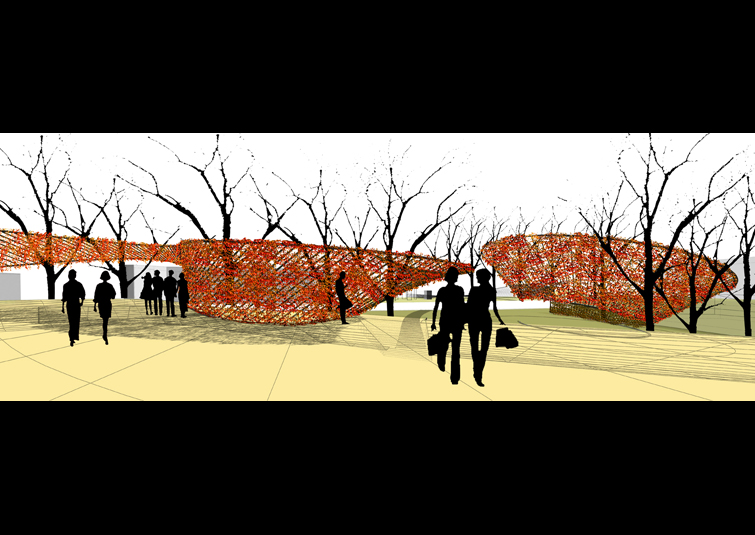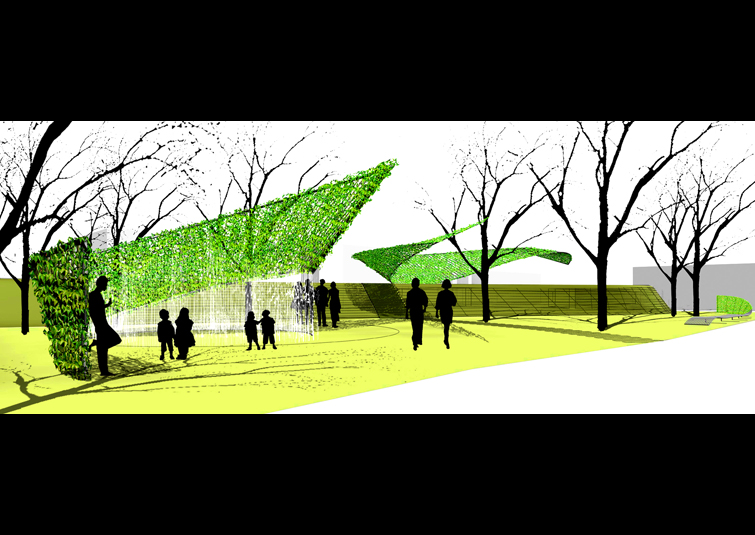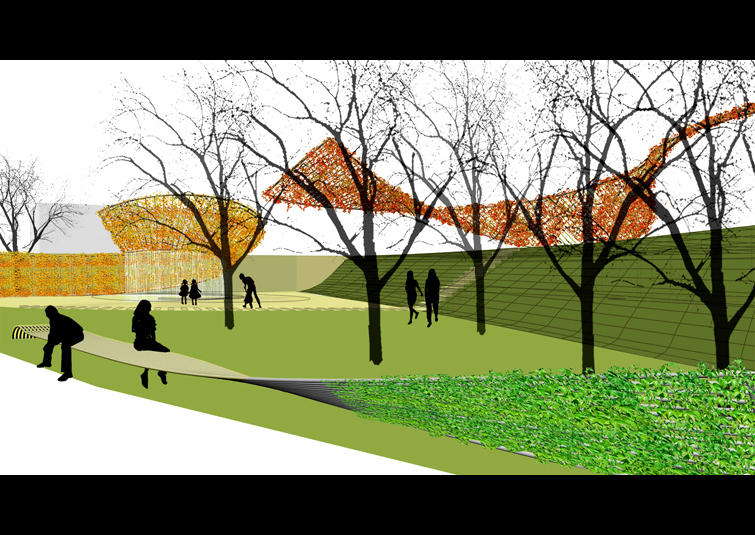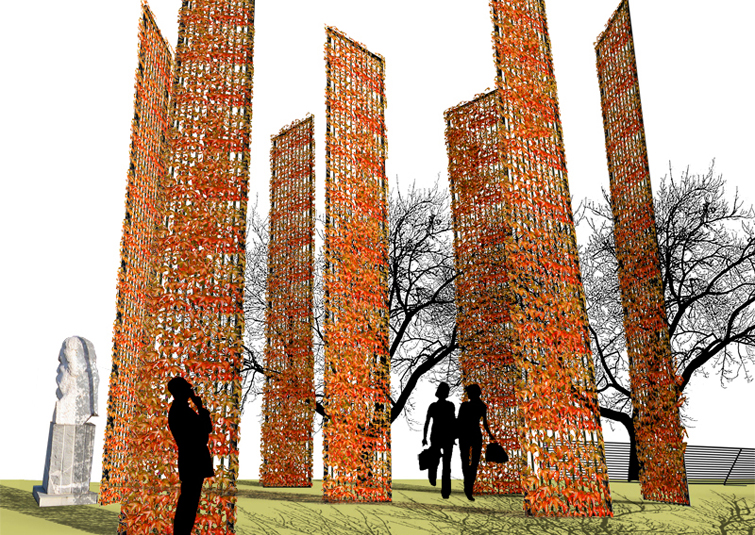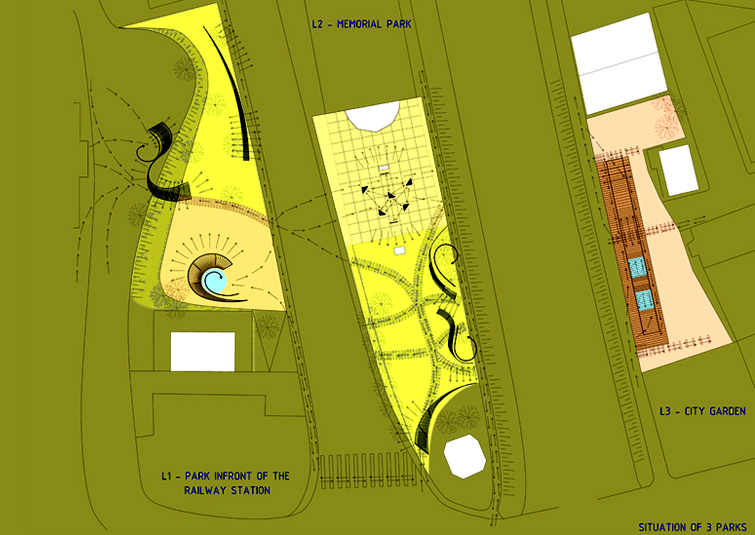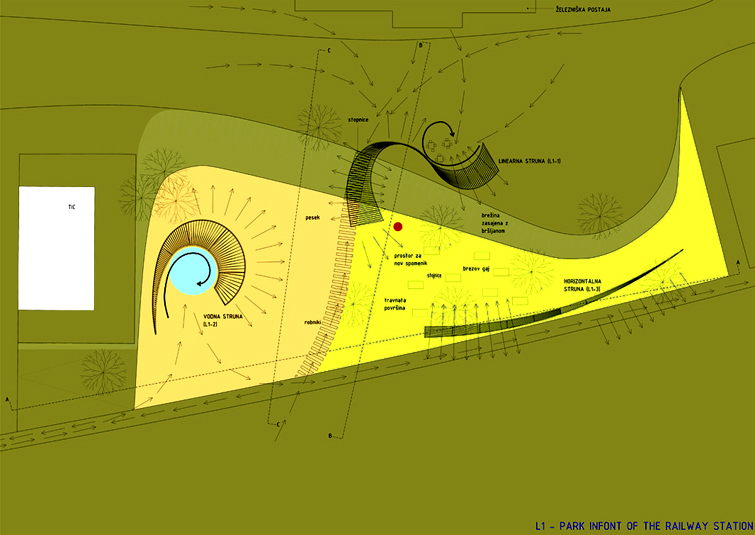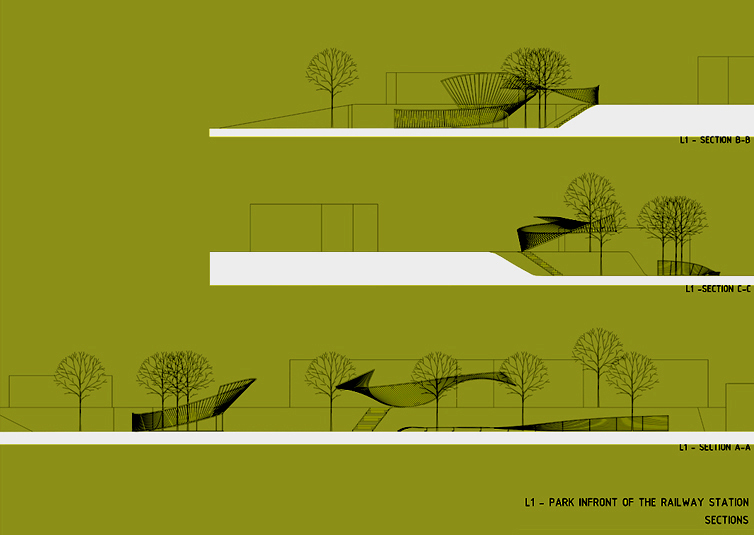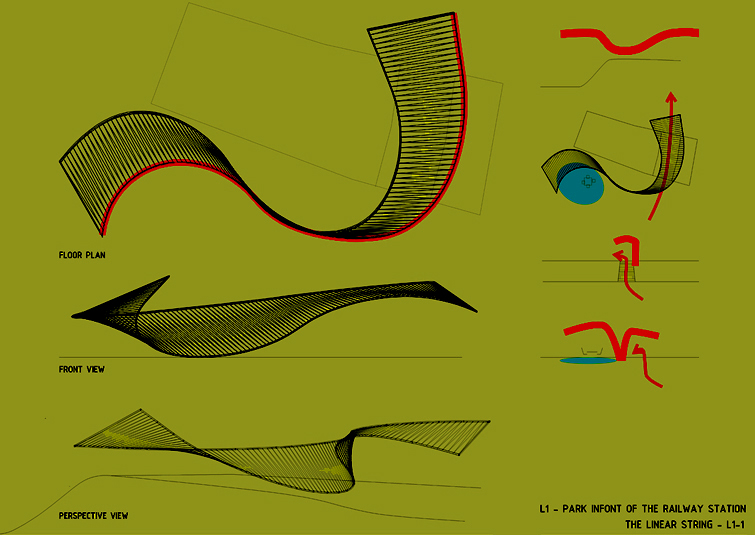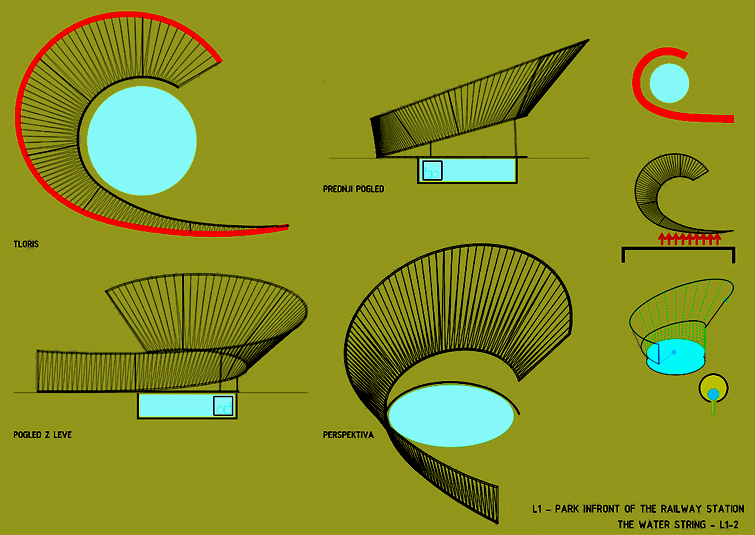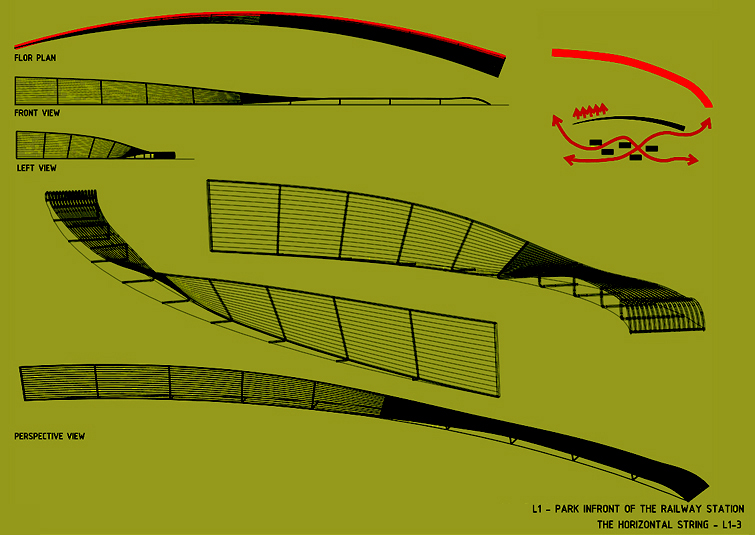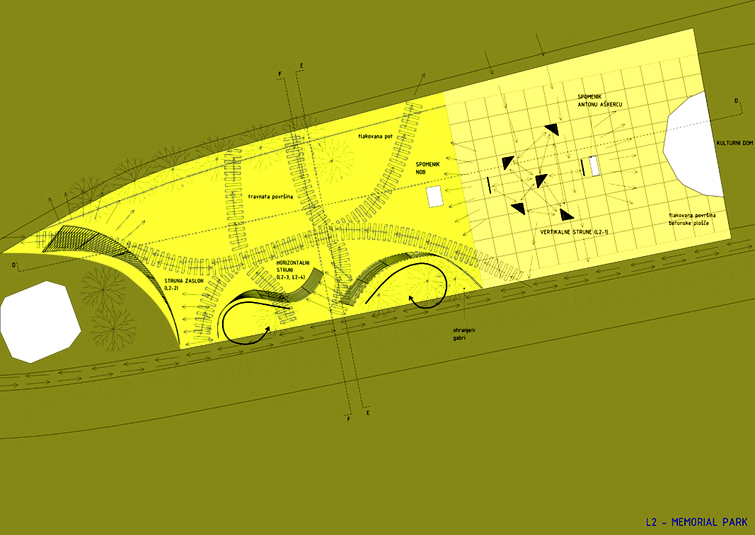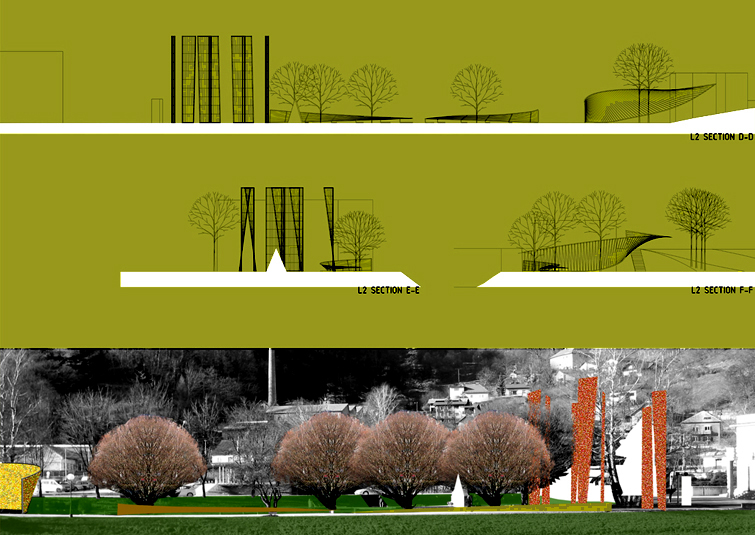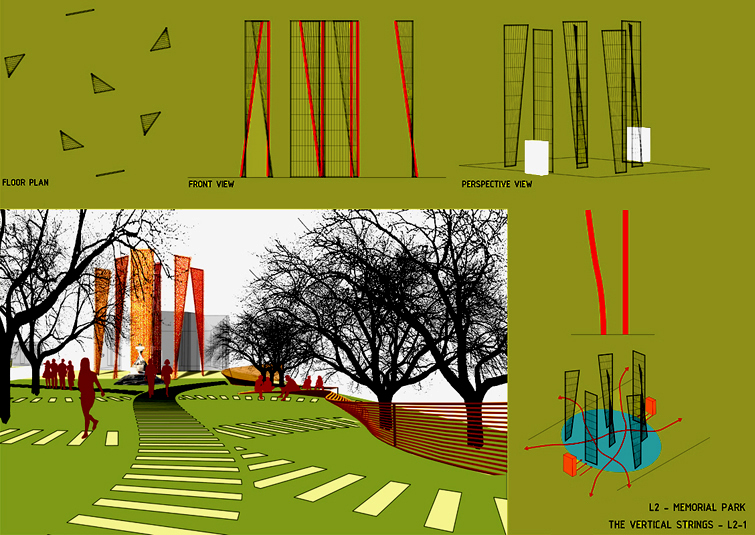

| PROJECT: | 3 PARKS IN LAŠKO |
| SOURCE: | COMPETITION PROJECT - 2nd PRIZE |
| CLIENT: | CITY OF LAŠKO |
| SITE: | LAŠKO, SLOVENIA |
| PROGRAM: | PUBLIC, RESTAURANT |
| AUTHORS: | BREDA BIZJAK |
| COWORKERS: | NINA POLAJNAR |
| LANDSCAPE ARCHITECTURE CONSULTANTS: | DAMJAN ?ERNE, ANDREJA ZAPUŠEK |
| DATE: | 2006 |
Competition project treats three park locations in the city centre:
- the park at the railway station
- the memorial park
- the park at the Sava river bank
Three existing parks have explicitly transitional character. The aim of the project is to transform these spaces to focal points or points of interest.
Visual transition of all three parks in transverse direction is also another characteristic of these spaces which is used as positive potential.
In longitudinal direction, three locations are divided by the street on one side and by the river on other side, but we don’t perceive these separations inside one of the parks. They appear visually connected as three layers of one open space. We decided to emphasize this scene also because it’s the first scene when one steps out of the railway station building. The new perception of these spaces will enable different perception of the city and a micro-expression of the public space.
The project suggests a public space different by its experience and physical manifestation.
STRINGS
The strings are free standing spatial formations which influence with its position, course and dimension to the usage and experience of the space.
They are overgrown with greenery, planked with some construction material or flooded with water. They create ambiences between each other or in relation with other existing elements in space, they direct and lead our movement and sight through the space, they are connectors or separators of space.
The structure of a string enables multiple usages – as a green roof or wall, bench, light or fountain.
String stripes of shadow, light and vivid vegetation do not define elements, they define ambiences. Spaces of movement and spaces of rest. They twist and twine when directing and orienting, they elevate when covering and they descend when forming a bench. A bench continues into curtain, a curtain change to a roof. Strings also change through the seasons. During the winter they are uncovered steel structures, but during the spring, summer and autumn they are covered with leaves and burst with colours. In the evenings, strings glow up in light.
Our movements and perceptions are softly guided through the space, our sights open sequentially.
The strings present the people’s need for passion, joy and vividness. The aesthetic experience of green strings.
